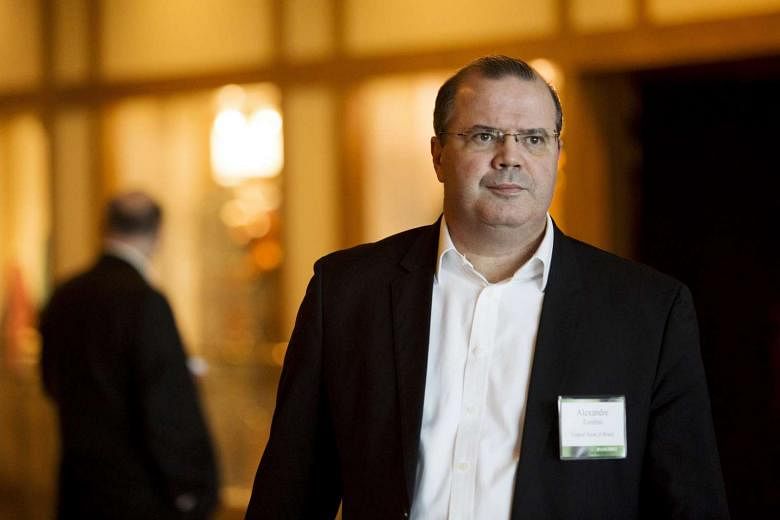(Bloomberg) - Brazilian policy makers will ignore pressure from traders to increase borrowing costs and are confident that keeping interest rates on hold is sufficient to tame inflation, central bank President Alexandre Tombini said. Swap rates pared gains and the real reduced its losses.
Mr Tombini spoke in a surprise appearance at a press conference in Brasilia, after swap rates jumped to a seven-year high despite the central bank's inflation report that reiterated policy makers' plan to keep the benchmark interest rate, known as the Selic, on hold.
"The increase of interest rates in the market will not be used as a guide for monetary policy," Mr Tombini told reporters in Brasilia Thursday.
"The monetary policy that we are reiterating is the stability of the Selic rate for a sufficiently prolonged period of time."
Swap rates maturing in January 2017 rose eight basis points to 16.54 per cent at 12.14 pm local time, after rising as much as 80 basis points. The real, after weakening as much as 1.66 per cent, pared its loss to 0.6 per cent.
Mr Tombini said the central bank could use all instruments, including its international reserves, to assure that currency and interest-rate markets function properly.
Fiscal Accounts Traders still doubt Mr Tombini will be able to hold rates unchanged after Standard & Poor's cut Brazil's credit rating to junk. Traders are concerned the government's plan to shore up fiscal accounts will be blocked in Congress and expect the Selic to reach as high as 15 per cent in October from 14.25 per cent.
In its quarterly inflation report, the bank earlier on Thursday said that the deepest recession in 25 years will more than offset the impact of the weaker currency on prices, allowing it to hold interest rates even as the inflation outlook deteriorates.
Policy makers increased their 2016 inflation rate forecast to 5.3 percent, up from 4.8 percent, according to their reference outlook published on the bank's website. They said the growing gap between inflation expectations and the 4.5 percent target is still relatively narrow, reiterating that they can meet their goal by keeping rates unchanged at 14.25 percent for a prolonged time.
"The recessionary scenario of economic activity should contribute to a reduction of the inflation trajectory of free prices in the rest of the year, more than offsetting the impact of currency shocks," the central bank said in its quarterly inflation report.
The monetary policy committee "considers that the scenario of inflation convergence toward 4.5 per cent at the end of 2016 has been maintained, despite a worsening of the balance of risks recently exacerbated by the effects of the sovereign credit rating downgrade."
The central bank forecasts the economy will contract 2.7 per cent this year, compared with an earlier forecast of a 1.1 per cent decline. Standard & Poor's credit downgrade will delay the recovery in Latin America's biggest economy, it said.

